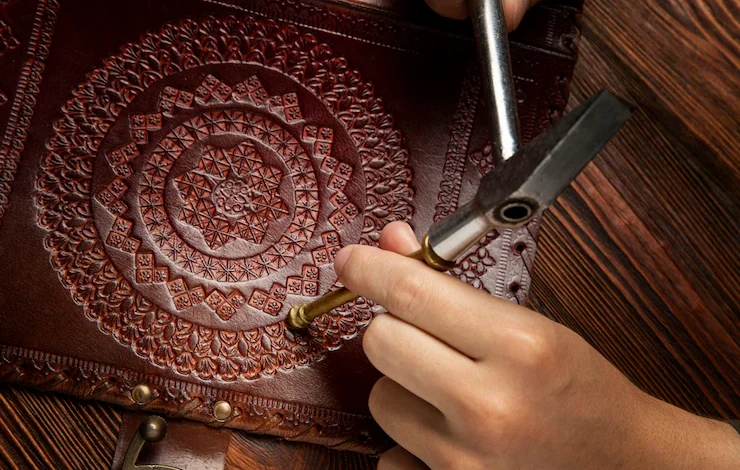How to start a Handmade leather goods store in South Africa

South Africa is a country rich in cultural heritage and craftsmanship, making it an ideal location for entrepreneurs looking to start a business in the handmade leather goods industry. The demand for high-quality, locally produced leather products is on the rise, presenting an exciting opportunity for aspiring business owners. This article will provide a step-by-step guide on how to establish a successful handmade leather goods store in South Africa.
Step 1: Market Research Before diving into the business, it’s crucial to conduct thorough market research. Identify your target audience, analyze competitors, and gain insights into consumer preferences and trends. Understand the demand for specific leather products and explore niche markets that can set your store apart.
Step 2: Develop a Business Plan A well-structured business plan will act as your roadmap, outlining your goals, strategies, and financial projections. It should include a description of your products, pricing strategy, marketing plans, and details about your target market. This document will not only guide you but can also be helpful when seeking funding or partnerships.
Step 3: Source High-Quality Materials Establishing relationships with reliable suppliers is essential for maintaining the quality of your handmade leather goods. Look for suppliers who offer a wide variety of leather types, finishes, and colors. Ensure that the leather is ethically sourced and meets your quality standards.
Step 4: Set Up Your Workshop Create a well-equipped workshop that meets your production needs. Invest in essential tools such as cutting knives, sewing machines, leather punches, and finishing equipment. Make sure you have a sufficient workspace with ample storage for materials and finished products.
Step 5: Hire Skilled Artisans Handmade leather goods require craftsmanship and attention to detail. Recruit skilled artisans who possess the necessary skills and experience to create high-quality products. Conduct interviews, review portfolios, and consider providing training to refine their techniques and ensure consistency in your product offerings.
Step 6: Design and Product Development Develop a distinctive product line that aligns with your target market’s preferences. Create unique designs, paying attention to functionality, aesthetics, and durability. Consider offering customization options to cater to individual customer preferences and increase customer satisfaction.
Step 7: Establish an Online Presence In today’s digital age, it is crucial to have a strong online presence. Create a professional website to showcase your products, provide information about your brand story, and enable e-commerce functionality. Utilize social media platforms to build a following, share engaging content, and interact with potential customers.
Step 8: Build Partnerships and Collaborations Explore partnerships with local boutiques, concept stores, or online marketplaces to expand your reach and increase brand visibility. Collaborate with fashion designers or other artisans to create limited-edition collections, which can attract new customers and generate excitement around your brand.
Step 9: Marketing and Promotion Develop a comprehensive marketing strategy to raise awareness about your handmade leather goods store. Utilize social media advertising, influencer partnerships, and search engine optimization to reach your target audience effectively. Participate in local craft fairs, markets, and exhibitions to showcase your products and connect with potential customers face-to-face.
Step 10: Provide Excellent Customer Service Customer satisfaction is crucial for the long-term success of your business. Offer personalized service, prompt responses to inquiries, and ensure timely delivery of orders. Encourage customer reviews and testimonials to build trust and loyalty.
Starting a handmade leather goods store in South Africa can be a rewarding venture, combining craftsmanship with entrepreneurship. With meticulous planning, attention to quality, and effective marketing, you can establish a successful business that caters to the growing demand for locally made leather products. Embrace the unique cultural heritage of South Africa, and let your creativity shine through your handmade leather goods, captivating customers with your craftsmanship and attention to detail.




